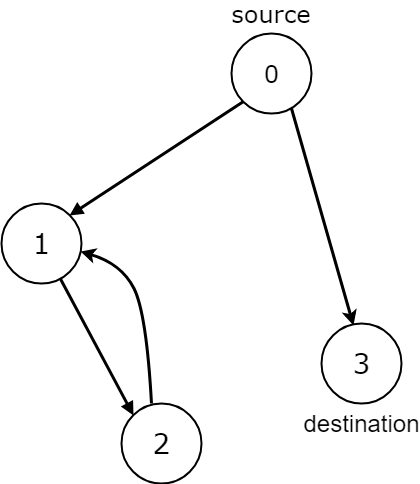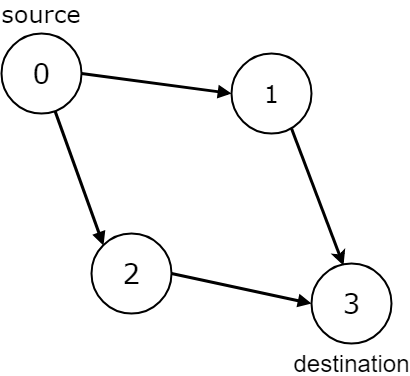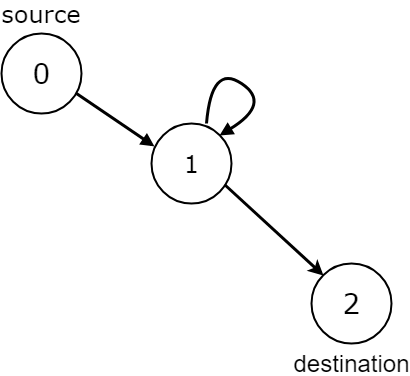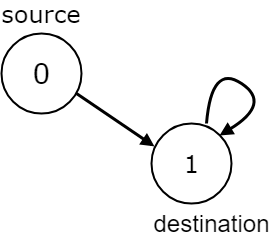Given the edges of a directed graph, and two nodes source and
destination of this graph, determine whether or not all paths starting from
source eventually end at destination, that is:
- At least one path exists from the
sourcenode to thedestinationnode - If a path exists from the
sourcenode to a node with no outgoing edges, then that node is equal todestination. - The number of possible paths from
sourcetodestinationis a finite number.
Return true if and only if all roads from source lead to destination.
Example 1:

Input: n = 3, edges = [[0,1],[0,2]], source = 0, destination = 2 Output: false Explanation: It is possible to reach and get stuck on both node 1 and node 2.
Example 2:

Input: n = 4, edges = [[0,1],[0,3],[1,2],[2,1]], source = 0, destination = 3 Output: false Explanation: We have two possibilities: to end at node 3, or to loop over node 1 and node 2 indefinitely.
Example 3:

Input: n = 4, edges = [[0,1],[0,2],[1,3],[2,3]], source = 0, destination = 3 Output: true
Example 4:

Input: n = 3, edges = [[0,1],[1,1],[1,2]], source = 0, destination = 2 Output: false Explanation: All paths from the source node end at the destination node, but there are an infinite number of paths, such as 0-1-2, 0-1-1-2, 0-1-1-1-2, 0-1-1-1-1-2, and so on.
Example 5:

Input: n = 2, edges = [[0,1],[1,1]], source = 0, destination = 1 Output: false Explanation: There is infinite self-loop at destination node.
Note:
-
The given graph may have self loops and parallel edges. - The number of nodes
nin the graph is between1and10000 - The number of edges in the graph is between
0and10000 0 <= edges.length <= 10000edges[i].length == 20 <= source <= n - 10 <= destination <= n - 1
Difficulty:
MediumLock:
PrimeCompany:
GoogleProblem Solution
1059-All-Paths-from-Source-Lead-to-DestinationAll Problems:
Link to All Problems
All contents and pictures on this website come from the Internet and are updated regularly every week. They are for personal study and research only, and should not be used for commercial purposes. Thank you for your cooperation.